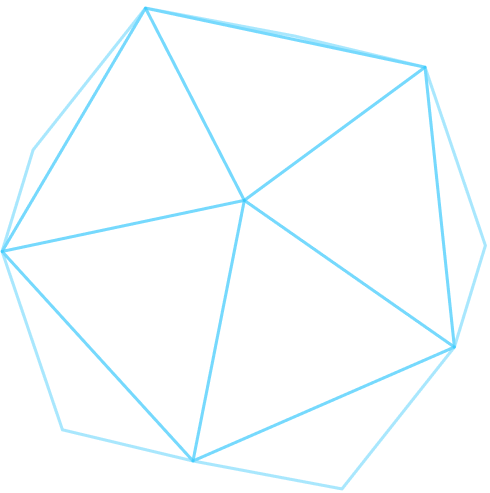Open your eyes and wake up to a dream that is as real and deep as you can imagine and as personal as you are, which keeps you in that state all day long. This dream is not a product of your intelligence; rather, it is created in collaboration with a machine or artificial intelligence. In this world, consciousness, technology, and the subconscious create dreams, while machines dream.
The Fusion of AI and the Unconscious Mind
Artificial intelligence (AI) has now moved beyond the traditional role of machines and has reached the emotions, thoughts, feelings, and subconscious of humans. Experts have developed systems that can understand dreams and create them by analyzing emotional states, brain waves, and online behaviors. These dreams are not simulated or ordinary. These algorithms, which are more in line with reality and take into account human sentiments, reflect our hidden feelings and emotions.
Decoding Dreams: The Role of Machine Learning
Recent studies and projects are making major strides:
- DreamNet: A framework that analyzes sleep narratives (text) plus EEG signals to decode emotional states in dreams. In text-only mode, it reached ~92% accuracy, and with EEG data, it boosted that to ~99%.
- DreamLLM-3D: Combines large language models with 3D generative visuals. Users speak or describe their dreams; the system builds immersive virtual environments reflecting the objects, characters, and emotions in those dreams.
- Dream Recorder by Modem (Netherlands): A device that records your spoken dream description in your own words and turns it into short “lo-fi movie” style visuals. It’s open-source, affordable, and built to help you reflect.
These advances are turning once-speculative ideas into tools: for therapy, for art, for self-understanding.
Ai-Generated Dream Therapy Applications
Mental health & therapy
AI can help people confront trauma, anxiety, or recurring nightmares by generating dreamscapes that let them explore and process pain safely.
Artistic expression
Artists are transforming dream content (from brain data or narrative) into images, installations, or immersive environments. Refik Anadol’s work is a good example of machine “hallucinations” turned into art.
Sleep & dream research
Tools like DreamNet are being used to better understand how dreams correlate with emotional health, stress levels, and even sleep disorders. That has potential for early diagnostics and personalized wellness.
Artistic Expression: AI-Generated Dreamscapes
Artists perceive dreams with artificial intelligence and create their embodiment on a digital canvas. Turkish media artist Refik Anadol, known as a “digital dream scholar,” has created dynamic visual experiences through “machine hallucinations.” It feels like you’re in a computer dream world. The machine collects vast datasets and transforms creative dreams into animated images.
The machine creates dynamic paintings of the human subconscious. Blurring the lines between reality and imagination, it offers viewers glimpses of machine-generated dreams. Similarly, platforms like Deep Dream and Wombo have given users the ability to dream and transform them into real images. Now everyone can dream and present them to the world. Previously, creation was only for those with the skills. But now AI has made art the right of the common man.
Ethical Considerations and the Future of AI Dreams
As AI moves closer to our subconscious and imagination, important ethical questions are emerging. Who owns the dreams generated by AI? How should AI protect the people whose brain data, feelings, emotions, and behaviors it uses to create dreams? These questions are not technical but are related to human dignity, freedom, and agency.
In the analysis and preparation of dreams generated by AI, special care should be taken to ensure complete transparency and honesty, individual consent, and ethical guidelines. Therefore, an ongoing and meaningful dialogue between ethicists, psychologists, and technology designers is necessary so that we can protect human emotions and freedom as we step into this new world.
The Potential of AI-generated Dreams in Therapy
When AI-generated dreams are used to treat people mentally, the inclusion of this treatment method in the field of mental health could bring about a revolutionary change because these dreams are tailored to the individual’s personal needs.
Artificial intelligence also deepens emotional healing and self-awareness by understanding our thoughts. It is becoming a new means of healing the wounds of the soul. For example, if a person has gone through a traumatic experience, AI creates dreams that provide a safe environment filled with comfort where the person can face their grief without fear. These dreams not only help the person move on from past trauma but also make the healing process faster, deeper, and longer-lasting.
Ethical, Technical & Social Challenges
While exciting, this path is fraught with concerns:
Accuracy & Interpretation
Even at 99%, decoding dreams is not perfect. Dreams are symbolic, layered, and deeply personal. Missed cues or misinterpretations can change meaning.
Privacy & Data Security
Recording brain activity, emotional states, and dreams are extremely sensitive. Who owns that data? How is consent managed?
Emotional Risk
Artificially constructed dream content could stir up trauma or confusion. Also, over-dependence on AI for emotional processing might weaken human resilience or interpersonal coping methods.
Regulation and transparency
We need frameworks to ensure ethical design: informed consent, transparency over algorithms, safe storage, and clarity about what AI is doing and not doing.
Future Directions
The range of AI-generated dreams is vast, unique, and versatile. As innovation in digital AI continues to improve, we can expect to see more and more sophisticated AI configurations in the future that are adept at creating expansive, deeply complex, and advanced dream experiences. These innovations could impact new forms of artistic and effective collaboration between humans and machines, as well as innovative recovery strategies that leverage the power of AI to restore inner peace and facilitate personal evolution. And create a future where healing and creativity go hand in hand.
Conclusion
A new era is dawning when AI and the human subconscious are exploring the depths of the mind together, where feelings, emotions, and dream stories can be given a stimulating form by taking advantage of AI’s features. This combination has become a mirror of technology and humanity for each other. This is not only the beginning of a journey into the scientific world but also a moral, intellectual process.
Because of this mutual relationship, we can look inside ourselves and understand human consciousness better. This relationship, which offers an opportunity for mental healing and creativity, also suggests that world truths will enlighten us about the hidden aspects of ourselves. Through AI, we give a new look to our inner questions, pains, joys, and dreams. This journey is still in its early stages, but the end is an endless sky. This world of AI dreams is not only the first step into the future but also a reflection of our inner selves.
Partner with KoderHive, where technology meets imagination. Our expert developers craft smart, human-centered digital experiences that connect innovation, emotion, and purpose. Contact us today to discuss your next big idea!
Similar Publications
Gorem ipsum dolor sit amet, consectetur adipiscing elit. Etiam eu turpis molestie, dictum est a, mattis tellus. Sed dignissim, metus nec fringilla accumsan, risus sem sollicitudin lacus, ut interdum tellus elit sed risus. Maecenas

How Enterprise Process Automation Helps CIOs Unlock Smarter Decision-Making
CIOs are at the intersection of technology, corporate growth, and strategy in this highly digital age. Their role extends beyond simply maintaining IT operations; it also involves leveraging data to...

Design Systems: The Secret to Consistency on Large Teams
When teams grow bigger, projects often get messy. One person may use a new color, another may design a different type of button, and developers might be confused about which...




